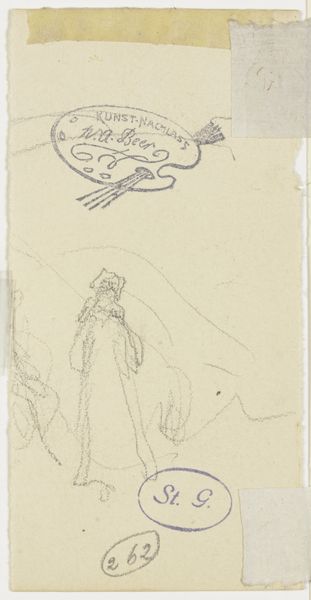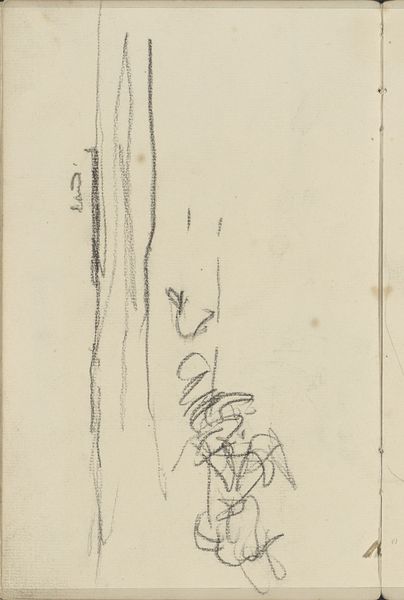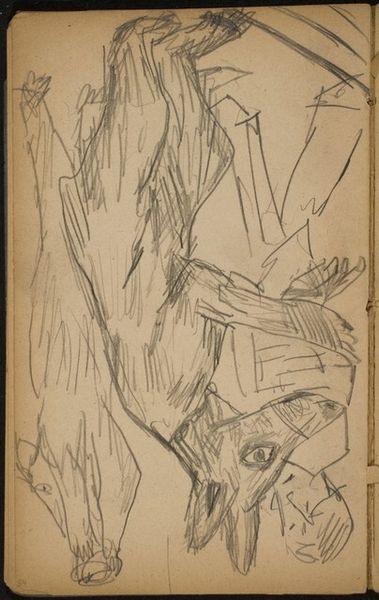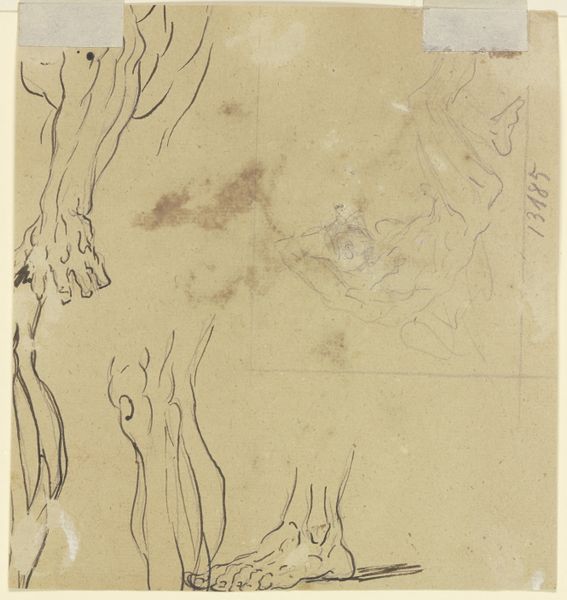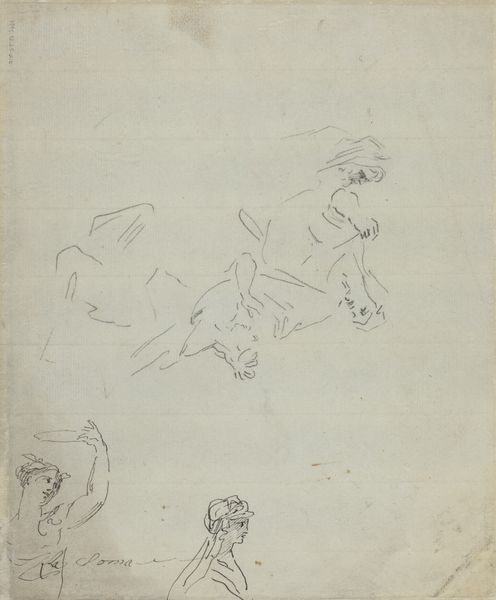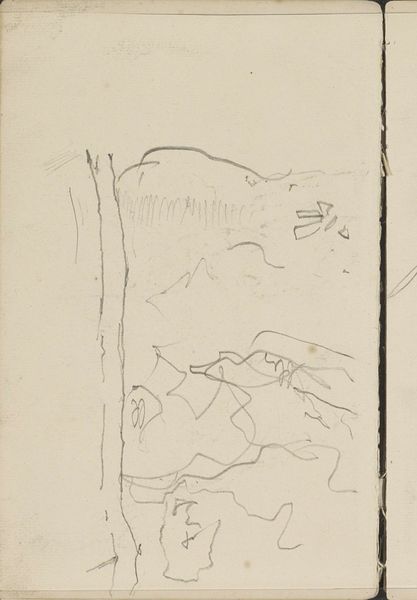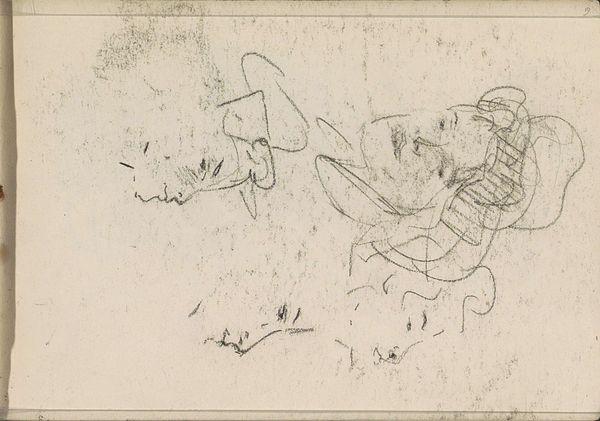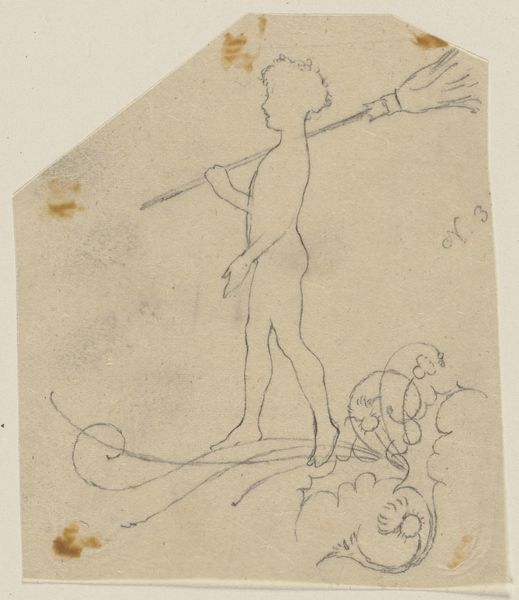
Dimensions: height 164 mm, width 128 mm
Copyright: Rijks Museum: Open Domain
Curator: This delightful drawing, "Apen in bomen," or "Monkeys in Trees," by Gerrit Willem Dijsselhof, dates from around 1904 to 1906. It’s a pen and ink sketch on paper, and it's part of the Rijksmuseum collection. Editor: The immediacy is striking. The quick, gestural lines lend a lively, almost anxious quality to the scene. What do you make of the composition? Curator: Immediately, I think about the symbolic resonance of the monkey, which has varied across cultures, sometimes representing playfulness and wit, and other times, foolishness or mimicry. Dijsselhof has used monkeys before—maybe as a metaphor for human behaviour. Editor: Interesting, but what catches my eye is the negative space. The monkeys and trees are clustered, almost isolated within this vast emptiness. The use of open space pushes them to the perimeter—there is a real emphasis on edges, the margins of the composition. It seems unfinished almost. Curator: Well, as a drawing, a quick study, maybe unfinished isn't necessarily a criticism. It is interesting the way Dijsselhof positions them, these liminal figures on the fringes of a landscape. We see the monkeys elevated and removed—a perspective looking at our primitive nature through the symbolic register. It feels removed, yes? Editor: Indeed. The trees, rendered with such delicate strokes, reach upward, but there's a certain barrenness, too. Are they meant to suggest anything further beyond the immediate figures? The marks almost become decorative. Curator: Quite possibly, yes. While not his only animal subject, apes can signal wildness or a more instinctual existence—elements, especially at the turn of the century, in conversation with civilization and modernity. What about those monkeys, they really do demand an accounting. Editor: Indeed. But I am seeing also the drawing as a network of lines and forms, which the animal figures really help to animate the emptiness surrounding it—giving it some real texture and, somehow, a kind of visual balance. Curator: It’s a potent sketch, Dijsselhof manages to invite a range of interpretations in so simple a form, yes? Editor: I’d have to agree. What initially appears to be a casual rendering gradually reveals layers of artistic intentionality. Curator: Indeed, an economy of expression and yet so dense with psychological and cultural echoes.
Comments
No comments
Be the first to comment and join the conversation on the ultimate creative platform.
